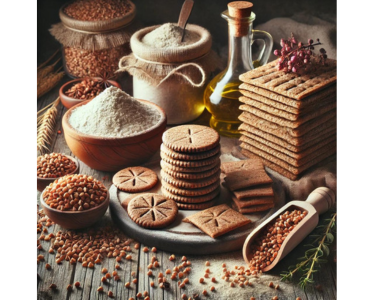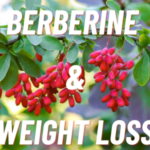Buckwheat Boom: The Nutritious Grain Alternative Taking Kitchens by Storm

In recent years, buckwheat has emerged as one of the most exciting grain alternatives, captivating the attention of health enthusiasts, chefs, and home cooks alike. Despite its name, buckwheat is not a type of wheat but a nutrient-dense seed that has become a staple in gluten-free and plant-based diets. With its rich flavor and impressive health benefits, this ancient grain alternative is making waves in kitchens worldwide.
Here’s why buckwheat is booming and how you can join the trend by incorporating it into your everyday meals.
What’s Fueling the Buckwheat Boom?
Buckwheat is far from new—it’s been cultivated for thousands of years—but it’s recently resurfaced as a modern superfood due to its numerous health benefits, sustainability, and versatility in cooking. Let’s dive into why buckwheat is taking over pantries everywhere.
1. Nutritional Powerhouse
One of the biggest reasons for buckwheat’s growing popularity is its nutritional profile. It’s packed with essential nutrients, offering a combination of high-quality protein, fiber, and essential minerals like magnesium and manganese. Buckwheat also contains antioxidants like rutin, which have anti-inflammatory properties and support heart health.
2. Gluten-Free and Naturally Vegan
With more consumers searching for gluten-free alternatives, buckwheat has become a go-to ingredient. Whether you’re celiac, gluten-sensitive, or just looking for healthier options, buckwheat is a perfect substitute for conventional grains. As a plant-based food, it’s also popular among vegans and vegetarians seeking a complete protein source.
3. Low Glycemic Index for Steady Energy
Unlike many other grains and flours, buckwheat has a low glycemic index, meaning it helps regulate blood sugar levels without the spikes and crashes that come with more refined carbohydrates. This makes it an excellent choice for those managing diabetes or anyone wanting to maintain stable energy levels throughout the day.
4. Sustainability Matters
As environmental awareness grows, buckwheat is being recognized as a sustainable crop. It grows quickly and requires fewer pesticides than traditional grains, making it an eco-friendly option for those looking to reduce their carbon footprint. This resilience, paired with its minimal need for fertilizers, has made buckwheat a champion crop in sustainable agriculture.
5. Culinary Versatility
Buckwheat is available in several forms—flour, groats, and flakes—allowing it to be used in a variety of recipes, from savory dishes to sweet treats. Its distinct nutty, earthy flavor complements both simple and complex dishes, giving cooks and bakers endless possibilities.
Where to Buy Buckwheat
Buckwheat is widely available in many different forms, and you can find it at:
- Health Food Stores: Chains like Whole Foods and Sprouts carry a variety of buckwheat products, including flour, groats, and flakes.
- Online Retailers: Websites like Amazon, Thrive Market, and Bob’s Red Mill offer a broad selection of buckwheat products, perfect for stocking up.
- Local Farmers’ Markets: Many local vendors offer buckwheat as part of their grain selection, allowing you to support local agriculture while adding a sustainable ingredient to your pantry.
Buckwheat Boom: A Trend That’s Here to Stay
As more people embrace the benefits of buckwheat, it’s clear that this nutritious seed is here to stay. Whether you’re looking for a gluten-free alternative, a nutrient-dense addition to your diet, or a way to experiment with new flavors in the kitchen, buckwheat is a game-changer. Its rise in popularity reflects not just a trend, but a shift toward healthier, more sustainable eating.
So, why not hop on the buckwheat bandwagon? With its rich nutritional profile, versatile uses, and eco-friendly credentials, buckwheat is a boom you won’t want to miss in your kitchen.
How to Incorporate Buckwheat into Your Kitchen
If you’re curious about how to bring this nutritious grain alternative into your kitchen, you’re in luck. Buckwheat is incredibly versatile and can be used in many of your favorite recipes. Here are a few ideas to get you started with bread, cookies, and crackers made from buckwheat.
Buckwheat Cookies: A Nutty, Sweet Treat
For those with a sweet tooth, buckwheat flour can be used to create deliciously unique cookies. Its nutty flavor pairs well with ingredients like almond flour and coconut sugar, offering a more nutritious alternative to traditional cookie recipes.
Ingredients:
- 1 cup buckwheat flour
- 1/2 cup almond flour
- 1/2 cup coconut sugar
- 1/2 cup butter or coconut oil
- 1 egg (or flax egg for a vegan option)
- 1 tsp vanilla extract
These cookies are perfect for satisfying your cravings while staying on track with healthier eating habits.
Mixing:
- In a large mixing bowl, cream the butter (or coconut oil) and coconut sugar together until light and fluffy.
- Beat in the egg (or flax egg) and vanilla extract until well combined.
- In a separate bowl, whisk together the buckwheat flour, almond flour, baking soda, and salt.
- Gradually add the dry ingredients to the wet mixture and mix until a dough forms.
- Fold in optional chocolate chips, nuts, or dried fruits.
Preparing:
- Preheat your oven to 350°F (175°C). Line a baking sheet with parchment paper.
- Drop spoonfuls of cookie dough onto the prepared baking sheet, leaving space between each one for spreading.
- Flatten each cookie slightly with the back of a spoon or your hand.
Cooking:
- Bake the cookies for 10-12 minutes, or until the edges are golden brown.
- Remove from the oven and let the cookies cool on the baking sheet for 5 minutes before transferring them to a wire rack to cool completely.
Buckwheat Crackers: A Crispy, Gluten-Free Snack
Buckwheat’s natural crunch and flavor make it an excellent base for crackers. These gluten-free snacks are perfect for pairing with dips, cheeses, or simply enjoying on their own.
Ingredients:
- 1 cup buckwheat flour
- 1/2 cup ground flaxseed
- 1/2 tsp salt
- 2 tbsp olive oil
- 1/2 cup water
These homemade crackers are as wholesome as they are satisfying, making them a great snack option for those avoiding processed foods.
Mixing:
- In a large bowl, whisk together the buckwheat flour, ground flaxseed, salt, and any optional dried herbs or sesame seeds.
- Add the olive oil and water to the dry ingredients, and mix until a dough forms. The dough should be firm but pliable.
Preparing:
- Preheat the oven to 350°F (175°C). Line a baking sheet with parchment paper.
- Place the dough between two sheets of parchment paper and roll it out to about 1/8-inch thickness. The thinner the dough, the crispier the crackers.
- Remove the top sheet of parchment paper and use a knife or cookie cutter to cut the dough into your desired cracker shapes.
- Carefully transfer the cut crackers to the prepared baking sheet.
Cooking:
- Bake the crackers for 15-20 minutes, or until they are crisp and golden brown.
- Remove from the oven and allow the crackers to cool completely on the baking sheet before storing them in an airtight container.





 Previous Post
Previous Post Next Post
Next Post